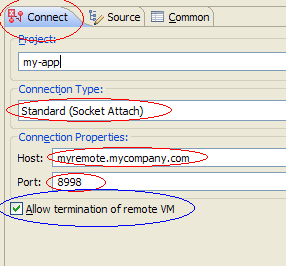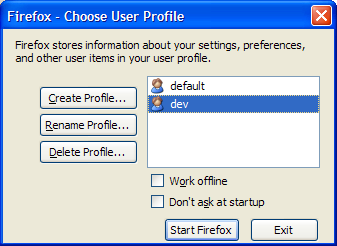Face ISN'T the Index of Mind
I love reading interesting blogs. One of my very favorite blogs is BetterExplained by Kalid Azad. I was reading one of his posts which was about "Building a site you (and your readers) will love" and in that blog post he recommends a famous blog which I knew from a very long time but never read because they were monstrous (too long). It's none other than Steve Yegge's blog. I admire Kalid's writing and a recommendation coming from him is highly regarded by me. So, I went ahead and read a few blogs of Steve Yegge. Before reading his blog, I had a prejudice about Stevey and I thought he was just a guy who rants about things endlessly and the articles are boring and controversial (like VI vs EMACS). I never completed the first paragraph of any of his posts cause I was too scared and too tired to read due to the scroll bar's length. But this time around, I scheduled some time and read some of his writings.
I loved his blog. I missed them all these days, but that's OK. Yes, he writes BIG articles, but they are worth reading for a programmer. In one of Stevey's posts, he talks about Practicing Programming (isn't that my blog's name?) and he gives a few drills for us. That made me think about "
What do I want to learn this year?" I will list them here now. This will make you aware or motivate you in learning the things you have planned but never did. That's what you can take from reading this post. You can also give me suggestions if you think I am wrong somewhere with my choice. The following is the list that I made to answer that question. All the suggestions are highly appreciated.
(X)HTML + CSS
I learned HTML & CSS just by looking at the source of a few sites, and to customize my blog just to a point where I will be done with what I wanted. I know "what" makes it work but I don't know "how" it works. And XHTML being the language spoken by the web server to the web browser, it is my necessity to learn it well. In my honest opinion, every developer must know XHTML in today's world. (Don't you want to have your own site?)
Book: Head First HTML & CSS
Shell Scripting
Don't I know? Yes, I do. Again, it is exactly like how I know about HTML & CSS. I want to learn stuffs thoroughly. I love Unix, I like to work on the command line. It makes me feel like I'm a rocket scientist doing complicated stuffs :). But that's not the point. Unix is tougher to use than MS Windows and both their philosophies are completely different. Learning Unix and Shell Scripting should be one of the top priorities for a developer who doesn't work on MS technologies. And we all the know the benefits of scripting.
Books: Any recommendations?
Regular Expressions
This should be fun. Regex is very powerful and great. But with great power comes greater responsibility. So, I should really be knowing what I am doing with it. I have written a few regexes, but I am just an ordinary user. I want to elevate to the power user category in regular expressions.
Some people, when confronted with a problem, think “I know, I’ll use regular expressions.” Now they have two problems. --Jamie Zawinski
Book: Mastering Regular Expressions by Jeffrey E. F. Friedl (O'Reilly)
Python
My favorite scripting language. I love the syntax though I seriously hope that it's source code documentation gets improved (the one that we get with the help() function). Again, I know, I can write scripts, I can figure out things. But I would like to learn more here. Probably, I need to spend more time or write an Open Source module that is missing. This will surely be a good exercise to learn more.
Book: Python in a Nutshell by Alex Martelli (O'Reilly)
Online: Tech talks about Python on Google Videos by Google's employees (Alex has one too)
C
I'm ashamed to say that I not proficient with the mother of modern programming languages. Yeah, I know what you are saying, I learned in school. I also learned rocket science in school, does it count at NASA?
Books: Any recommendations here?
J2EE
I will be working on real J2EE applications now, not the ones we try out for learning it. I learned a lot of Servlets, JSP, EJB and so on. But never implemented them or got a chance to do these things at work so far. But now, I have to. I will learn all the buzzwords like JMS, WAS, Web Services, EJB, etc. that you "cool J2EE" dudes talk about. (Am I sounding like Stevey now? Whatever!)
Books: No idea, just Google.
VI/VIM
Now this will be really hard. I use Eclipse for everything and working on something tougher than notepad should be real fun. I know how to use it, I am not a complete stranger to VIM. I even know how to enable syntax highlighting, and stuff. But I want more than that. I would like to do find/replace without searching vim.org for tips (regex again). I would like to find out the total number of lines/words/characters while I am in the editor (not using grep on shell). I would like to do copy pasting very freely. I want all this to be done and more without my conscious mind getting disturbed while it's doing some other task. VIM should become the extension of my hand.
Books: Any suggestions?
Subversion (SVN)
I love Subversion (do you know Linus Torvalds hates it?). I love Subversion because it is free, easy to use, has excellent support for IDEs and has a huge community. I have used Subversion before at my workplace, I use it currently for my Open Source project hosted at Google Code. But I want to learn more about it. I want to know how to setup an SVN server that supports http and https connections. I want to know how the authentication and authorization need to be configured. I want to know how to work with SVN just by using the command line interface (for fun). I want to collect the useful commands, tips, and best practices.
Book: Version Control with Subversion (O'Reilly)
Release Version 1.0 of Clipboard PingPong
That's the first
open source software that I created which can be used to transfer clipboard contents across computers. It's at version "0.0.2" at present. I want to bring it to the general audience. Learning some of the things mentioned above will help me bring it in a better shape. It's really exciting, though it's very very small (I would like to keep it that way). Hopefully I will learn a lot from this experience and I can start contributing to other bigger and useful Open Source projects in future.
Blogging
Of course. This doesn't belong in "TO-LEARN" category but it's more of a TODO. Well, blogging about blogging is generally hated. So I won't go any further, it's boring too. But I would like to quote one thing from Stevey's blog post:
Even if nobody reads them, you should write them. It's become pretty clear to me that blogging is a source of both innovation and clarity. I have many of my best ideas and insights while blogging. Struggling to express things that you're thinking or feeling helps you understand them better.
The last line is so true.
What If I Don't Complete Everything I Mentioned?
I will be very disappointed. If I don't finish the mentioned things with *satisfaction*, I will push it to next year. But life is so short and knowing these things are necessary for anyone who wants to become a good software developer. Just knowing Java, using Eclipse and developing on Windows totally sucks! Life is much bigger and better than that. I will be working very hard and pushing a lot to complete these things. But quality matters more than quantity. I would rather learn half the things mentioned here thoroughly than just skimming through everything. In fact, I know most of the things mentioned here. I just want to know them better than an average developer in the streets. My quest is understanding better than just knowing them.
Next Year
It's too early but I left out a lot of things that were there in my head. These are the things I plan to do next year:
- Algorithms & Data Structures
- Algorithms & Data Structures (yes, I would like to do it twice)
- SQL in detail
- Unix Operating System in detail
- EMACS
- Ruby (could be replaced by Scala)
- JDK 7 new features (with a fresh mind after learning the other things)
That's all. (If you have read this far, you are really great!)
References












